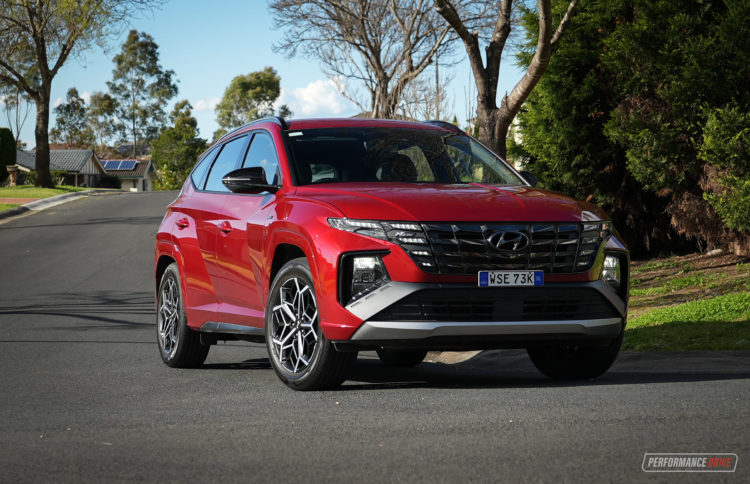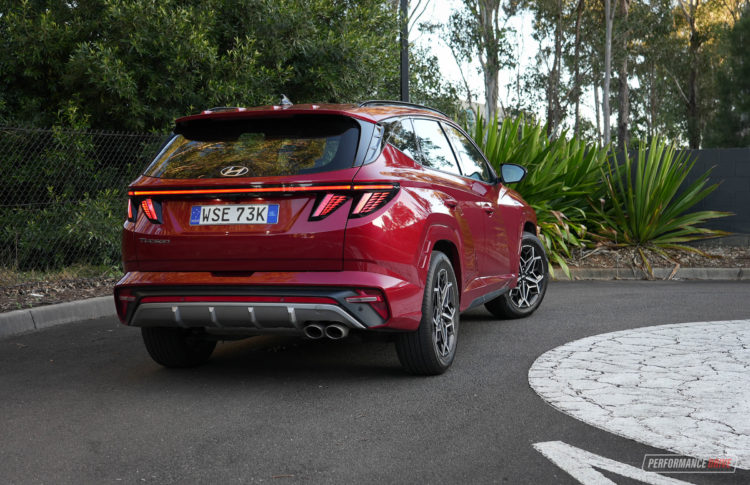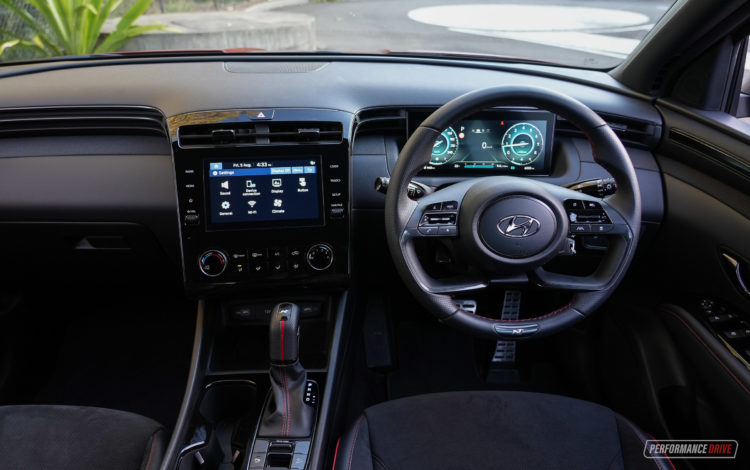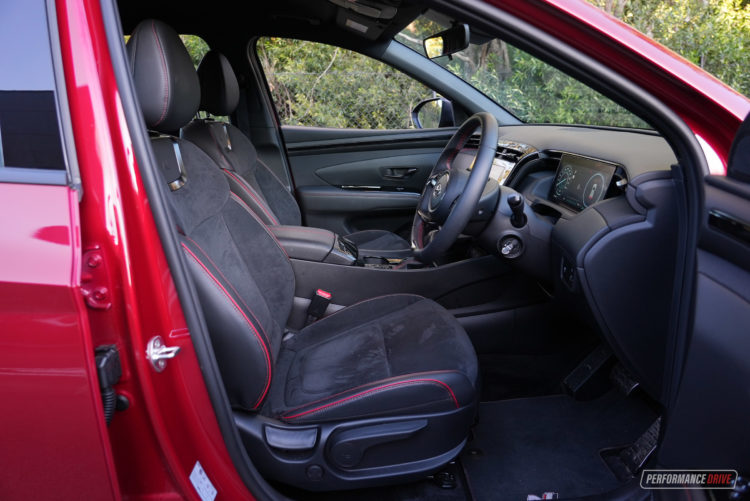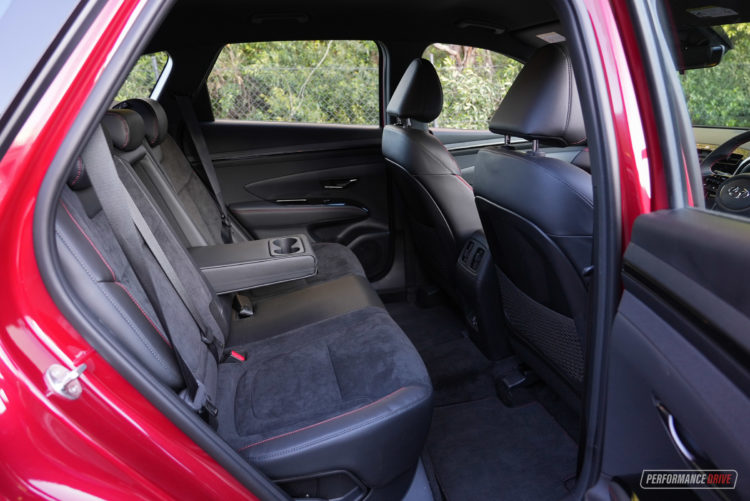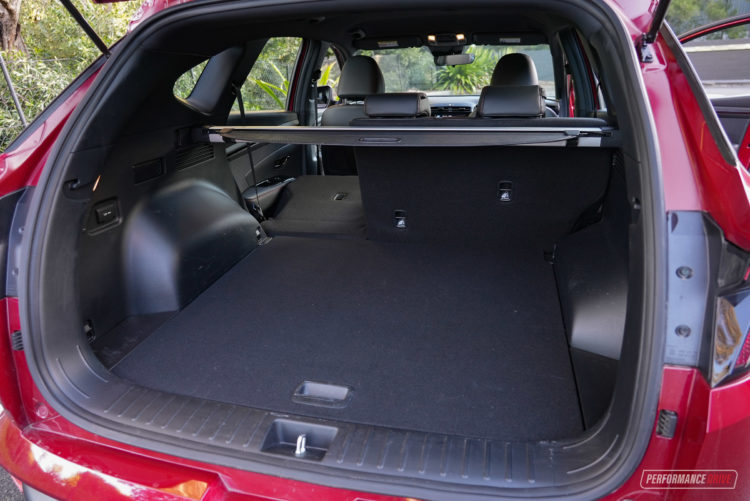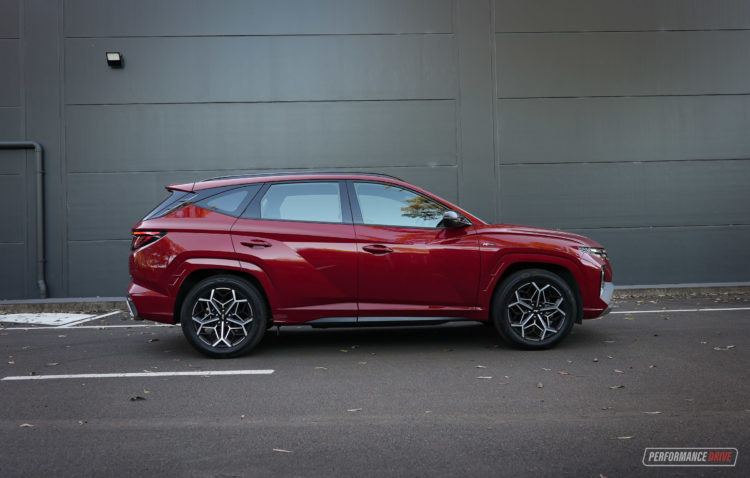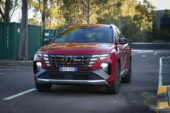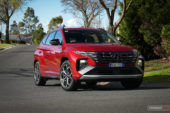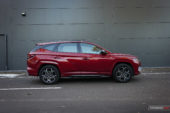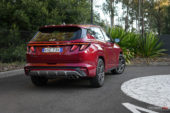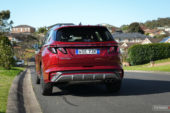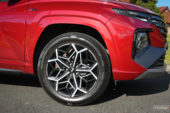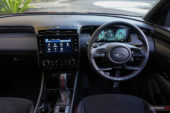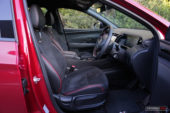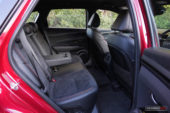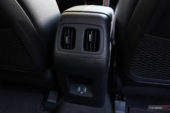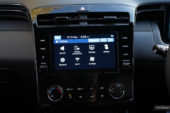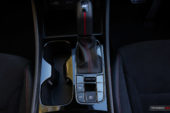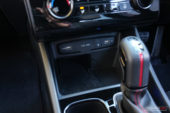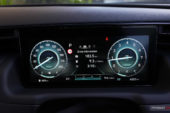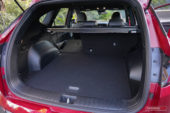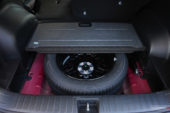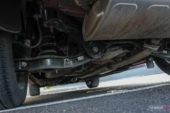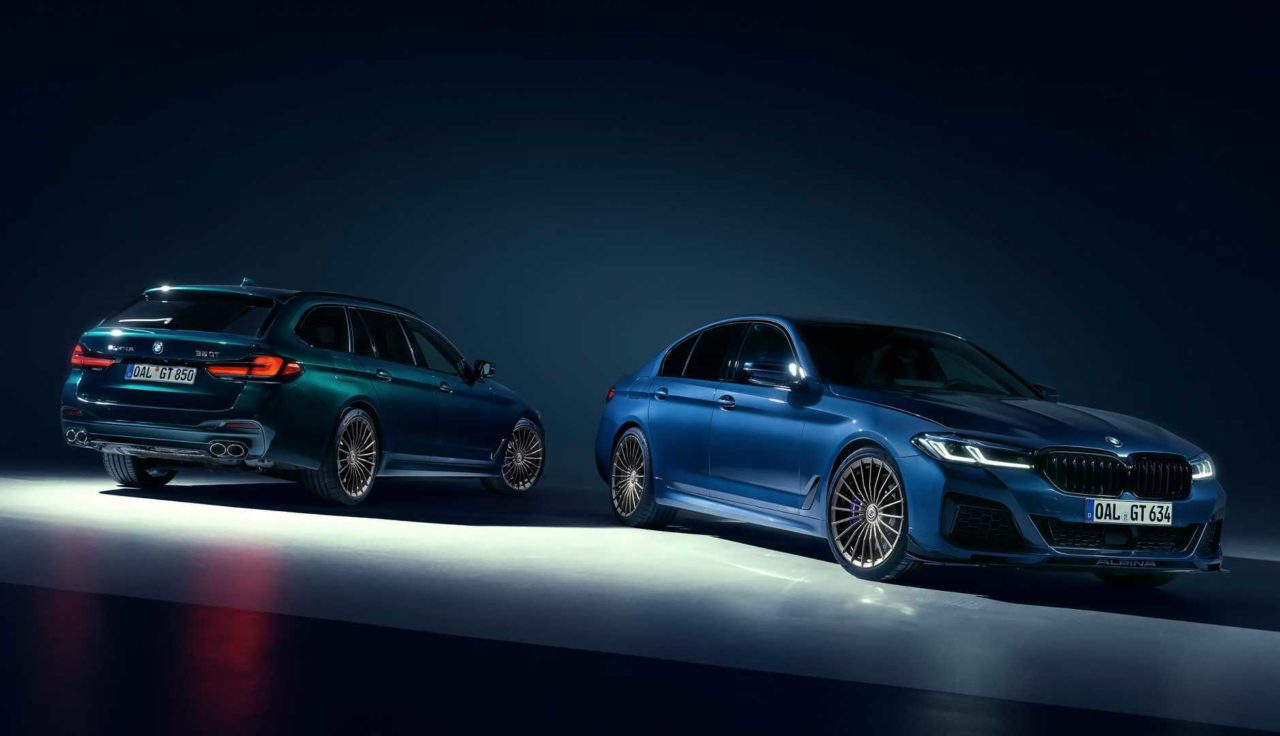Prospective mid-sized SUV buyers have loads of alternatives to choose from in the current car market. The Hyundai Tucson is one popular choice, and it consistently appears in the top five in sales numbers. It also offers many choices within its lineup, with three powertrains and four trim levels.
The Tucson is a well-rounded, practical, and good-looking SUV, and we particularly like the diesel option (review here). But if you’re having trouble choosing a variant, this review looks at the base model Tucson with the N Line trim option. The N Line pack can be added to all variants – the base, Elite and Highlander.
Being the base, you get the entry level 2.0-litre petrol ‘MPi’ engine that develops 115kW and 192Nm. It pairs to a six-speed auto gearbox that powers the front wheels only. Prices kick off from $34,900, plus $4k with the N Line pack (excluding on-road costs). Among the ranks, a 132kW/265Nm 1.6-litre turbo-petrol engine and a 137kW/416Nm 2.0-litre turbo-diesel engine are also available.
2022 Hyundai Tucson N Line – THE SPECS
[column width=”47%” padding=”6%”]Engine: 2.0-litre petrol four-cylinder
Output: 115kW@6200rpm / 192Nm@4500rpm
Transmission: Six-speed auto
Drive type: Front-wheel drive
Wheels: F & R: 19×7.5, 235/55
ANCAP: Five stars
Tare weight: 1527kg
Power-to-weight: 13.27:1 (kg:kW)
Official fuel economy: 8.1L/100km
Economy during test: 8.3L/100km
Fuel capacity/Type: 54L/91 RON[/column] [column width=”47%” padding=”0″]Power efficiency: 14.19kW:L/100km
0-60km/h: 5.19 seconds*
0-100km/h: 11.29 seconds*
60-110km/h: 8.07 seconds*
1/4 mile: 17.99 seconds at 129.4km/h*
Max acceleration: 0.663g*
100-0km/h braking: 3.13 seconds at 40.63 metres*
Max deceleration: -1.152g*
Decibel at idle: 38*
Peak decibel at 60-100km/h: 84*
Priced from: $38,900[/column][end_columns]
* Figures as tested by PerformanceDrive on the day. Factory claims may be different
2022 Hyundai Tucson N Line – THE PACKAGE
All Tucsons get a more sculptured and athletic look than the previous generation. Hyundai is now one of the bolder brands to watch in terms of external design. For instance, the ‘parametric’ front grille catches your eye as it distinctively reflects light to make a cool pattern; and the outer segments of the grille integrate with the first column of LED lights. Then the rear is also striking with its jagged LED taillights, merged together as one long light unit.
The N Line pack adds N Line exclusive trims and design elements, like body-coloured cladding, a unique spoiler design, black mirror caps, door frame and beltline moulding, special 19-inch alloy wheels, a body kit, upgraded front and rear LED lights with a rear black tinted lens, and silver painted N Line skid plates.
Once you’re on the inside and ignore the hollow sounding doors on close, the Tucson presents stylishly. Brushed metal-look areas, and the way the air vents morph into the shapes of the dash look chic. Then the N Line builds on its elegance with an upgraded door trim, leather and suede seats and trimmings with red stitching on the centre arm rest and gear knob, an N Line steering wheel, black headlining, metal look pedals and door scuffs, and a 10.25-inch digital instrument cluster.
Practicality also hits the mark, with lots of storage on offer. There are handy shelves on both sides of the drivetrain tunnel, large door pockets and bottle holders, and a generously-sized centre console. The layout is well-organised, which makes the area around you feel simpler to pilot.
We’re surprised with how much wriggle room you get. Legroom and headroom is lavish wherever you sit. But, unlike some others among the competition, there is no option for a third row. Though, the Santa Fe and Palisade might entice you if you need more seats. Boot space is just above average in the Tucson, when compared with the competition. It offers 539 litres, or 1860 litres when the second row is folded down.
Across the entire range, all Tucsons come standard with an impressive list of important safety features. You get forward and reverse collision mitigation with pedestrian avoidance, post-collision mitigation, front and rear cross traffic alert, distance-controlled cruise control, lane departure warning with passive steer assistance, active lane-keeping aid with blind-spot sensors, and side door exit warning.
Some other features that come standard on all Tucsons include a full-sized spare alloy wheel, road sign recognition, rear parking sensors, auto headlights, a leather steering wheel and gear knob, and even a wireless phone charging pad. The optional N Line pack then adds auto high beam.
Hyundai offers a commendable five-year, unlimited kilometre warranty, 12 months of free road-side assistance, and capped-price servicing. Servicing is required every 12 months or 15,000km.
2022 Hyundai Tucson N Line – THE DRIVE
It goes without saying that entry-level models get the lowest performing engines. But in the Tucson, it suffers with it. With 115kW to play with, it struggles to live up to the rest of the neat package. And with just 192Nm of torque, there is simply not enough low-down grunt to give it the confident pull away it deserves. The turbo in the smaller 1.6-litre petrol engine, and the diesel engine seems to make all the difference. We tested 0-100km/h in a best of 11.29 seconds.
There is also a horrendous acceleration delay. When you accelerate, the programming ‘thinks’ that there will enough torque to keep it in the same high gear and pull away. So, nothing happens. Then you naturally accelerate more and suddenly it drops a few gears and it screams. There is not enough, then too much. It’s as if the programming is calibrated for a torquier engine.
The base model Tucson also retains the older six-speed auto instead of the newer seven-speed or eight-speed autos seen with the other engines. At least there is no CVT auto to be seen.
Even if you don’t care for zippier engines, you must care for your fuel bill. This is also where the base engine trails behind. The official average fuel consumption is 8.1L/100km, or 0.9L/100km worse than the 1.6L petrol engine, and 1.8L/100km worse than the diesel engine. Our average over approximately 600km travel gave similar results, with 8.3L/100km.
Thankfully, all Tucson models receive the same suspension setup – and it’s a solid one. Locally tested for the Australian market, it absorbs bumps with nominal disturbance to its track, and maintaining a particularly mute cabin. And it does so without being sloppy or overly soft around corners. For an SUV it holds firm around fast corners. The balance between comfort and dynamics is just right.
2022 Hyundai Tucson N Line – THE VIDEO
2022 Hyundai Tucson N Line – THE VERDICT
The base model Tucson is feature-packed for an entry-level mid-sized SUV. Then the N Line pack adds some cosmetic upgrades for those who want something a little more special. You get a list so generous, it would cast doubts over why you’d want the mid- and high-spec variants.
Until you feel the engine. That’s where they get you. The base engine lacks power and torque, and exhibits a terrible acceleration delay. And all that for an engine that burns more fuel, too. We recommend either of the other two engines if you can afford it
[column width=”47%” padding=”6%”]PROS:
– Great to see the option of the N Line trim available across the range
– Huge interior and boot for the mid-size SUV market
– Composed dynamics, bump absorption and NVH levels
– Full-sized spare alloy wheel
– Loads of standard features even on base model
[/column] [column width=”47%” padding=”0″]CONS:
– 2.0 MPi engine lacks in torque, especially low in the rev range
– Doors sound inferior and hollow when closing
– Room for improvement in fuel consumption[/column][end_columns]
As always, if you’re thinking about buying a new car don’t forget to click here to speak with our car buying specialists.
